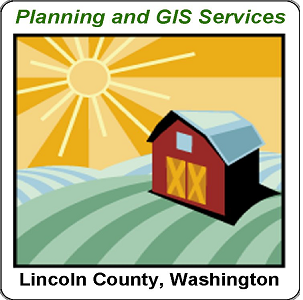- Single-story footings and foundation
- Residential Egress Windows
- Crawl Space Venting
- Use these Web Hole Details only if the original manufacturer information is NOT available.
- Required Inspections
REQUIREMENTS TO OBTAIN A BUILDING PERMIT
- Completed Building Permit Application with a site address. This address MUST be posted at the site before work can begin.
- Site Plan
- Proof of potable water: Such as letter from purveyor, septic permit.
- Approval of septic site from the Health Department: Septic Permit
- Copy of the contractor’s state license/certificate
- 2 sets (1 for Building Inspector/ 1 for Builder) of construction plans including but not limited to:
- All four sides viewed
- Size of windows
- Cross section of footings and foundation
- Cross sections of walls
- Insulation with R-value
- Floor joists plan – size and span
- Floor plan for each floor level
- One set of plans will be returned to you after they have been approved
- We cannot make copies of copyrighted plans
Inspections for Houses
If you call and leave a message on our voicemail, you must leave a call back number so we can reach you.
To clarify when it is necessary for the owner or contractor to notify this department of a needed inspection, the following information is furnished:
- Footings Inspection: Set to grade with all steel in place prior to pouring concrete.
- Foundation Inspection: To be made after excavations for footings are complete and any required reinforcing steel is in place. For concrete foundations, any required forms shall be in place prior to inspections. All materials for foundation shall be on the job, except where concrete is ready mixed, the concrete need not be on the job. Where the foundation is to be constructed of approved treated wood, additional inspections may be required by the building official.
- Concrete Slab or Under Floor Inspection: To be made after all in-slab or under-floor building service, equipment, conduit, piping accessories and other ancillary equipment items are in place but before any concrete is placed or floor sheeting installed, including sub-floor.
- Sub-floor Inspection: To be made prior to sheeting.
- Frame Inspection: To be made after the roof, all framing, fire blocking and bracing are in place and pipes, chimneys and vents are complete and the rough electrical, plumbing, and heating pipes and ducts are approved.
- Insulation Inspection: To be made after all wall insulation is in place. Ceiling insulation may be inspected on the final inspection.
- House Gas: Tested prior to unit connections.
- Tank Gas: After complete installation and operating.
- Final Inspection: To be made after finish grading and the building is completed and ready for occupancy.
Arrangements for all inspections may be made by calling 509-725-7911. We ask that at least two days advance notice be given so that trips may be properly scheduled to avoid duplication of visits to the same areas on a daily basis.
Access permits are required for approaches to all county roads. Existing approaches will be reevaluated when use is changed (i.e. farm approach to residential).
Smoke Alarms
R313.1 Smoke alarms. Smoke alarms shall be installed in the following locations:
- In each sleeping room.
- Outside each separate sleeping area in the immediate vicinity of the bedrooms.
- On each additional story of the dwelling, including basements but not including crawl spaces and uninhabitable attics. In dwellings or dwelling units with split levels and without an intervening door between the adjacent levels, a smoke alarm installed on the upper level shall suffice for the adjacent lower level provided that the lower level is less than one full story below the upper level.
When more than one smoke alarm is required to be installed within an individual dwelling unit the alarm devices shall be interconnected in such a manner that the actuation of one alarm will activate all of the alarms in the individual unit. The alarm shall be clearly audible in all bedrooms over background noise levels with all intervening doors closed.
All smoke alarms shall be listed and installed in accordance with the provisions of this code and the household fire warning equipment provisions of NFPA 72.
R313.1.1 Alterations, repairs and additions. When interior alterations, repairs or additions requiring a permit occur, or when one or more sleeping rooms are added or created in existing dwellings, the individual dwelling unit shall be provided with smoke alarms located as required for new dwellings; the smoke alarms shall be interconnected and hard wired.
Exceptions:
- Smoke alarms in existing areas shall not be required to be interconnected and hard wired where the alterations or repairs do not result in the removal of interior wall or ceiling finishes exposing the structure, unless there is an attic, crawl space, or basement available which could provide access for hard wiring and interconnection without the removal of interior finishes.
- Repairs to the exterior surfaces of dwellings are exempt from the requirement of this section.
R313.2 Power source. In new construction, the required smoke alarms shall receive their primary power from the building source, and when primary is interrupted, shall receive power from a battery. Wiring shall be permanent and without a disconnecting switch other than those required for over current protection. Smoke alarms shall be permitted to be battery operated when installed in buildings without commercial power or in the buildings that undergo alterations, repairs or additions regulated by Section R313.1.1.
Additional Information from Underwriters Laboratories Inc.

